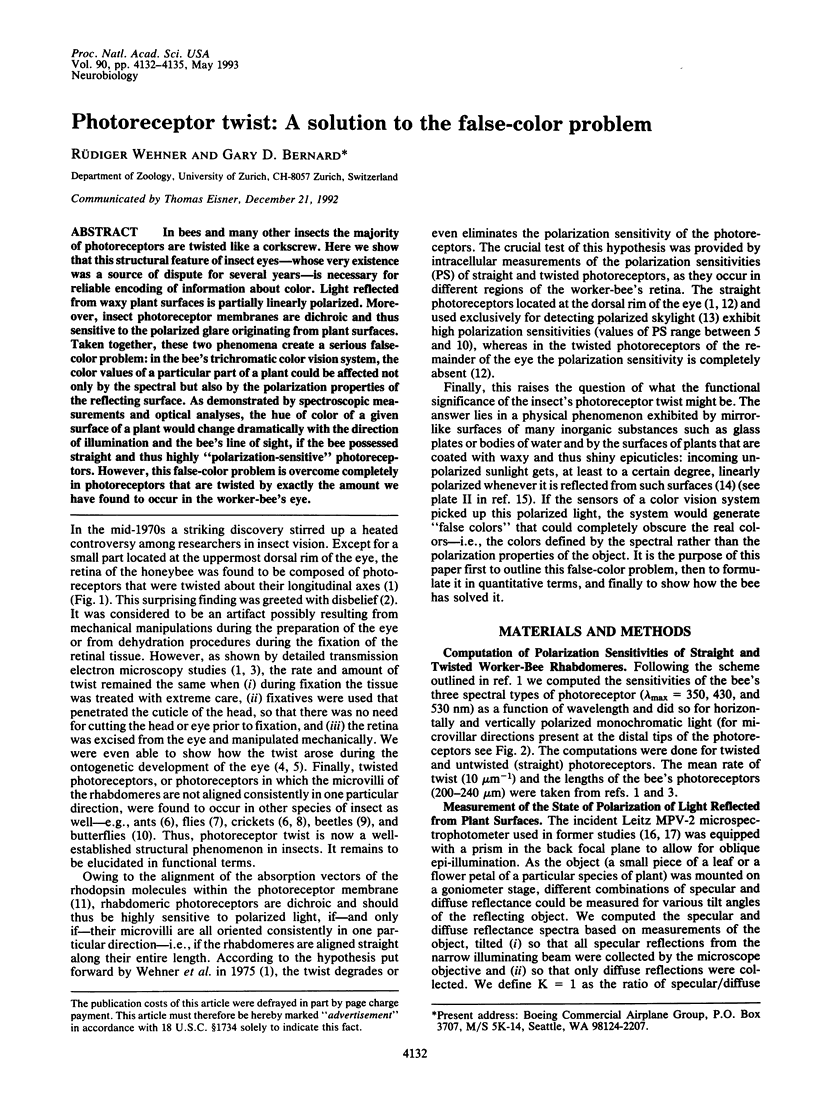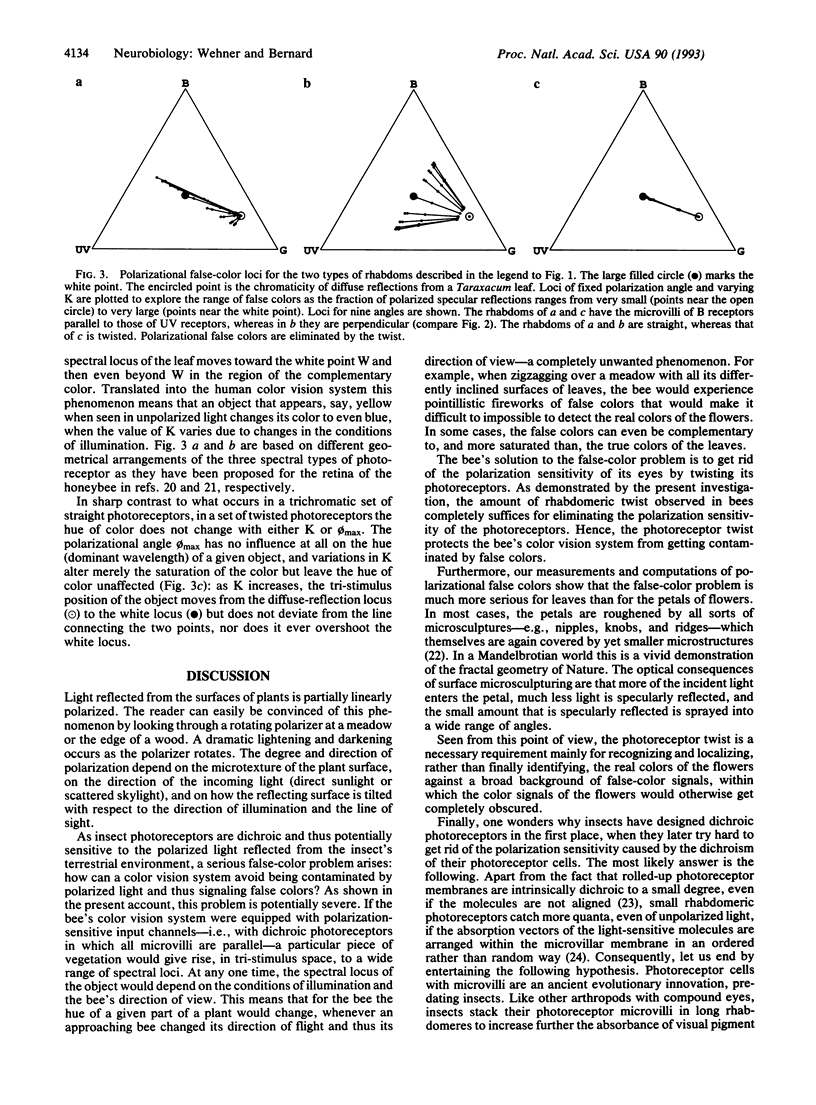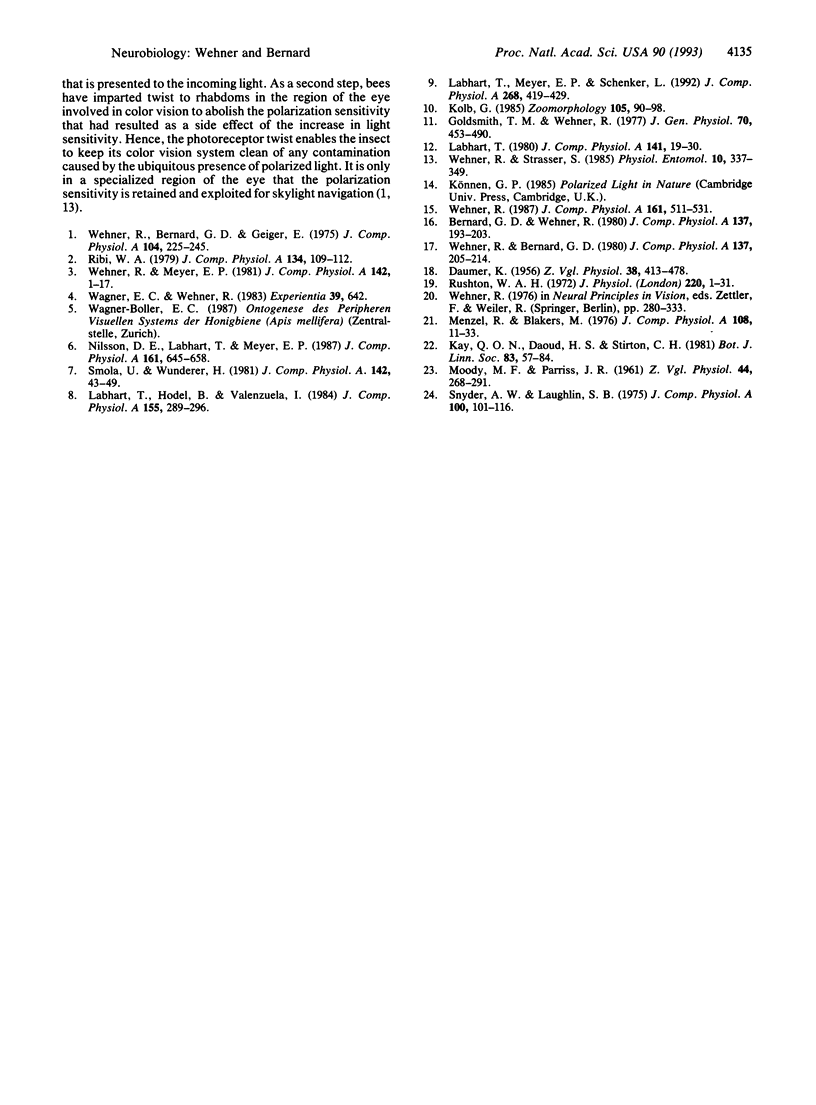Abstract
In bees and many other insects the majority of photoreceptors are twisted like a corkscrew. Here we show that this structural feature of insect eyes-whose very existence was a source of dispute for several years-is necessary for reliable encoding of information about color. Light reflected from waxy plant surfaces is partially linearly polarized. Moreover, insect photoreceptor membranes are dichroic and thus sensitive to the polarized glare originating from plant surfaces. Taken together, these two phenomena create a serious false-color problem: in the bee's trichromatic color vision system, the color values of a particular part of a plant could be affected not only by the spectral but also by the polarization properties of the reflecting surface. As demonstrated by spectroscopic measurements and optical analyses, the hue of color of a given surface of a plant would change dramatically with the direction of illumination and the bee's line of sight, if the bee possessed straight and thus highly "polarization-sensitive" photoreceptors. However, this false-color problem is overcome completely in photoreceptors that are twisted by exactly the amount we have found to occur in the worker-bee's eye.
Full text
PDF



Selected References
These references are in PubMed. This may not be the complete list of references from this article.
- Goldsmith T. H., Wehner R. Restrictions on rotational and translational diffusion of pigment in the membranes of a rhabdomeric photoreceptor. J Gen Physiol. 1977 Oct;70(4):453–490. doi: 10.1085/jgp.70.4.453. [DOI] [PMC free article] [PubMed] [Google Scholar]
- Labhart T., Meyer E. P., Schenker L. Specialized ommatidia for polarization vision in the compound eye of cockchafers, Melolontha melolontha (Coleoptera, Scarabaeidae). Cell Tissue Res. 1992 Jun;268(3):419–429. doi: 10.1007/BF00319148. [DOI] [PubMed] [Google Scholar]
- Stephens J. A., Taylor A. Fatigue of maintained voluntary muscle contraction in man. J Physiol. 1972 Jan;220(1):1–18. doi: 10.1113/jphysiol.1972.sp009691. [DOI] [PMC free article] [PubMed] [Google Scholar]


